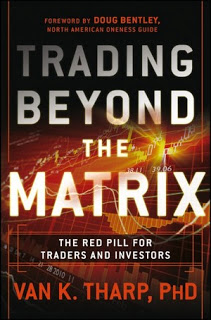 In addition to his “real” job managing money, Buff Pelz Dormeier develops technical indicators. He shares some of the fruits of his—and his noteworthy predecessors’—labor in Investing with Volume Analysis: Identify, Follow, and Profit from Trends (FT Press, 2011).
In addition to his “real” job managing money, Buff Pelz Dormeier develops technical indicators. He shares some of the fruits of his—and his noteworthy predecessors’—labor in Investing with Volume Analysis: Identify, Follow, and Profit from Trends (FT Press, 2011).
When I started reading this book I suspected that it would be like so many others: long on generalities and short on actionable ideas. The first hundred pages or so do indeed deal with general relationships between price and volume, and some of the material is familiar. But even the familiar material is often presented in an unusual way. Here’s one example.
Newton’s second law of motion, reinterpreted to apply to financial markets, analyzes “how much volume (force) is required to move a security (the object) a given distance (price change) at a given speed (acceleration/momentum). … Richard Wyckoff referred to this principle as the law of effort versus result, which asserts that the effort must be in proportion to the results.” (p. 47) As a corollary of this law, “if more volume (force) is required to produce less price change (acceleration), then the stock is becoming overly bought or sold.” (p. 85)
In apparent contradiction to Wyckoff’s law of effort is the rule of trend volume, according to which “more volume substantiates a stronger trend.” (p. 85) Can these two principles be reconciled? Dormeier suggests that they can, once we bring the notions of strong hands and weak hands into the equation. His discussion is too detailed to summarize here, but it is premised on how strong hands and weak hands play the game. As he writes, “Strong hands buy out of an expectation of capital appreciation. Weak hands buy out of greed and the fear of missing out on an opportunity. Weak hands sell from the fear of losing capital. Strong hands sell to reinvest in better opportunities (which does not have to be other equities).” (p. 87)
Dormeier really hits his stride when he turns “general volume principles into indicators with numerical values.” (p. 113) These indicators have a dual mandate—to lead price and to confirm price. But they don’t all work the same way; they are “tools, each of which is designed to explain a distinct piece of the volume puzzle.” (p. 117) (more…)


 Conventional wisdom is defined as: the generally accepted belief, opinion, judgment, or prediction about a particular matter.
Conventional wisdom is defined as: the generally accepted belief, opinion, judgment, or prediction about a particular matter.